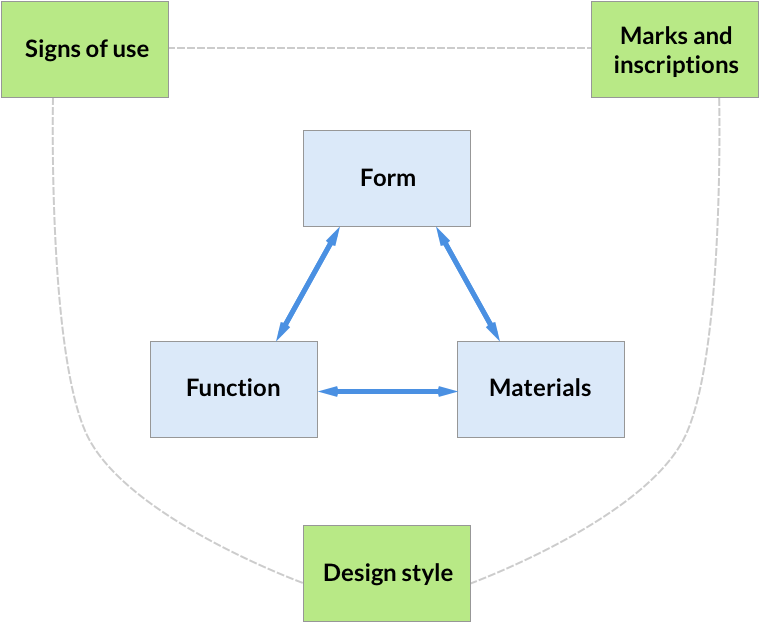The Identifications formula
Any object provides six main clues that Steph has distilled into this identifications formula:

Checklist: equipment
- Magnifying glass / jewellers eye-piece
- Magnet
- Gloves
- Padded table
- Digital camera
- Internet access
- Key reference books as listed on firstBASE
By using this formula, we have a logical method to work through, guiding and structuring the process of identifying.
Think about identification as an interrogation or analysis of an object using this schema. Use what you know, or can find out, from examining the object to lead you to determine the things you don’t know.
Essentially, what an object was used for (its function) dictates its form (shape) and the material it is made from.
Its design style, and any marks/inscriptions help to date it. Any signs of use, or wear and tear, help determine how it was used and therefore again what it was used for (function).
For example, if you know its form and material, have some clues of signs of use, you can make headway in determining what it was used for or what it is. If you know what it was used for, you can make an educated guess what it will be made from
Resource: Steph has created a flow chart that gives a more detailed, step by step aide memoir to help guide your interrogation of an object.
Checklist: be safe
- Never trust a handle
- Remove loose parts (eg lids) before handling an item
- Never trust the contents of a bottle or container, regardless of what the label says
- Always assume a firearm is loaded
- Dismantle complex items in a clear area, recording each part of the process, so you can put it back together